Q’eswachaka the Last Inca Bridge, Andean Technology
Towering over the rugged Andean terrain, the Q’eswachaka bridge beckons visitors with a blend of ancient allure and enduring mystery. This architectural gem, a testament to Inca engineering ingenuity, has stood the test of time, captivating all who lay eyes upon it.
As one delves into the intricate techniques behind its construction, a world of cultural symbolism and communal preservation efforts unfolds. But what lies beneath the surface of this iconic structure, and how has it managed to defy the odds for centuries?
Key Points
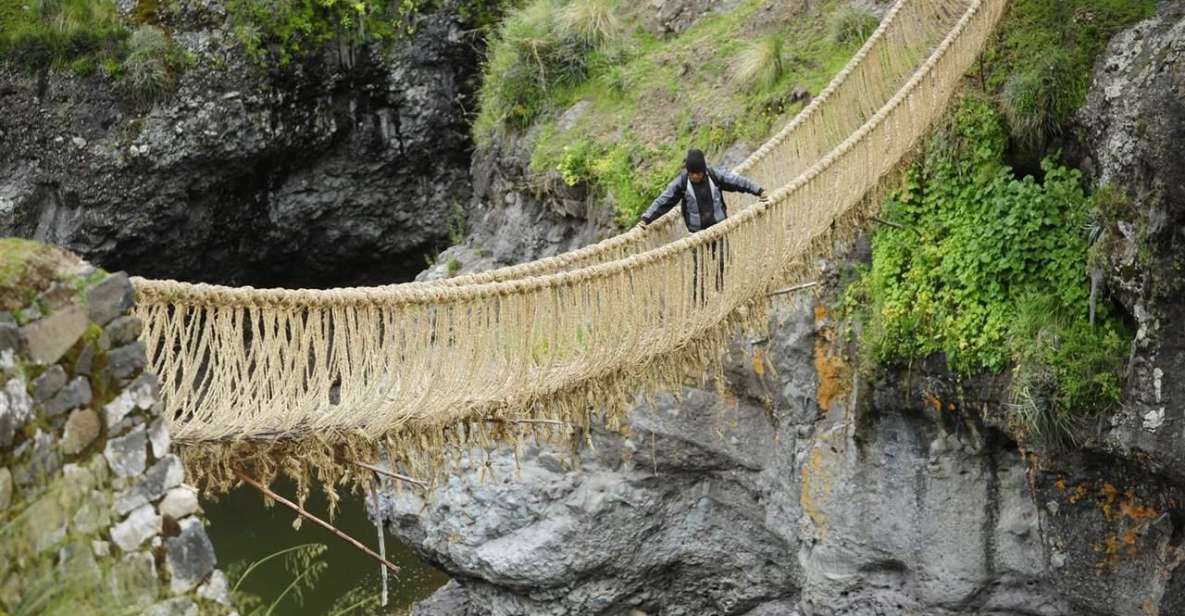
- Q’eswachaka embodies ancient Inca engineering techniques and cultural traditions.
- Reconstruction showcases community cooperation and heritage preservation.
- Conservation efforts blend traditional methods with modern conservation strategies.
- Economic benefits from tourism support local livelihoods and heritage conservation efforts.
Here's some more nearby activities we've reviewed
Historical Significance of Q’eswachaka
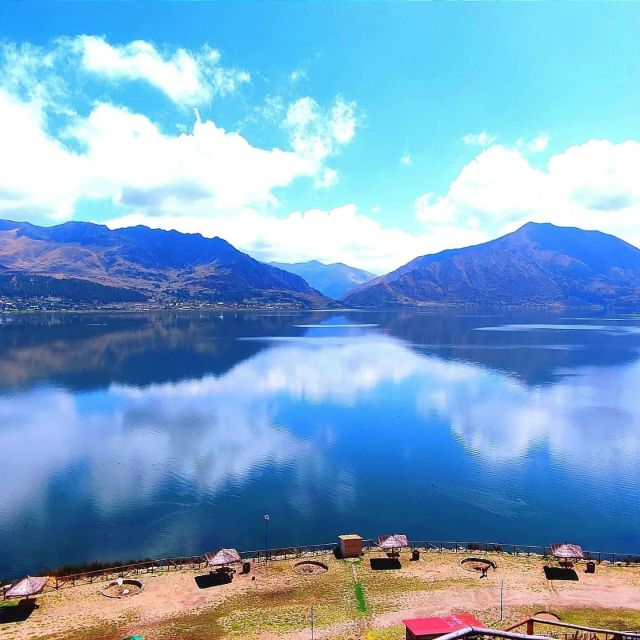
With a history dating back to the time of the Inca empire, Q’eswachaka stands as a remarkable testament to the engineering prowess and cultural traditions of its creators. This Inca bridge, crafted with techniques passed down through generations, holds immense significance in preserving Inca traditions and cultural heritage.
The construction of Q’eswachaka symbolizes the deep-rooted communal spirit of the Andean people and their dedication to maintaining their ancestral legacy. Each year, the bridge is meticulously reconstructed using traditional methods, reinforcing its role as a living connection to the past.
The preservation of Q’eswachaka not only showcases the ingenuity of Inca engineering but also highlights the importance of cultural continuity and the enduring legacy of indigenous communities in the region.
Conservation Efforts and Traditional Methods
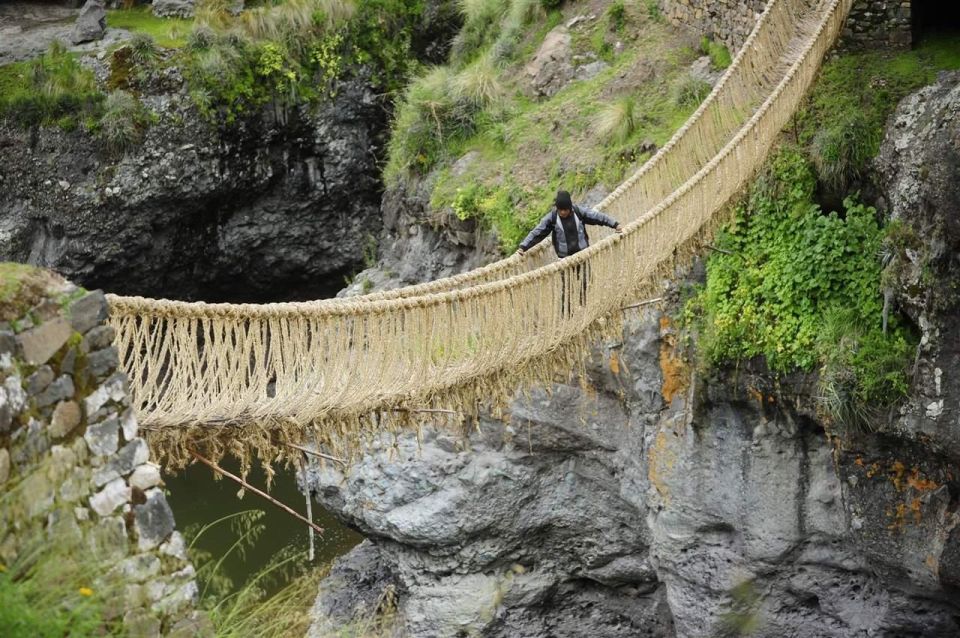
Preserving the cultural heritage of Q’eswachaka involves a harmonious blend of conservation efforts and the utilization of traditional methods passed down from ancient Inca generations. The locals employ traditional techniques such as the use of ichu grass and a communal labor system called ‘minka’ to maintain and rebuild the bridge annually.
Conservation practices focus on safeguarding the bridge’s structural integrity while respecting its historical significance. These efforts not only ensure the physical preservation of the bridge but also contribute to the continuation of Inca engineering and construction techniques. By combining modern conservation strategies with traditional methods, Q’eswachaka stands as a symbol of community cooperation, tradition, and the enduring legacy of the Inca civilization.
Inca Engineering Techniques and Construction
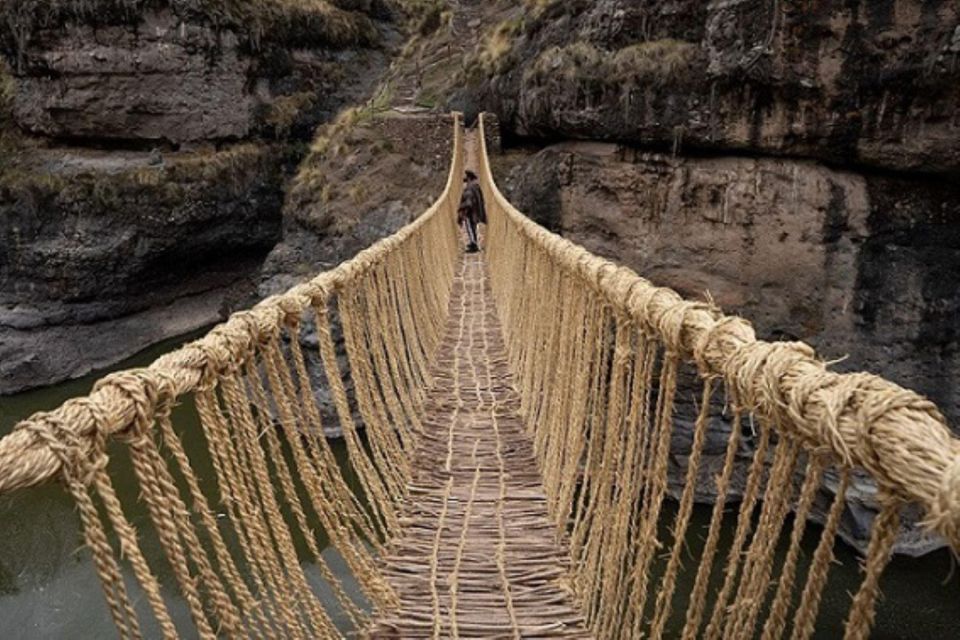
Inca engineering techniques and construction showcase a remarkable fusion of precision, ingenuity, and reverence for the natural environment. The ancient Incas were masters of architectural innovation, utilizing techniques that have stood the test of time. Here are some key aspects of Inca innovations in ancient architecture:
-
Machu Picchu’s Stone Masonry: Intricately carved stones fit together perfectly without mortar, showcasing advanced construction skills.
-
Terracing Systems: The Incas engineered terraces for agriculture on steep mountain slopes, demonstrating their understanding of irrigation and land management.
-
Road Networks: The extensive road system linked the vast Inca Empire, showcasing advanced engineering and organizational skills.
-
Quipu Communication System: The Inca’s use of knotted cords for record-keeping and communication highlights their unique blend of engineering and innovation.
Community Cooperation and Cultural Symbolism
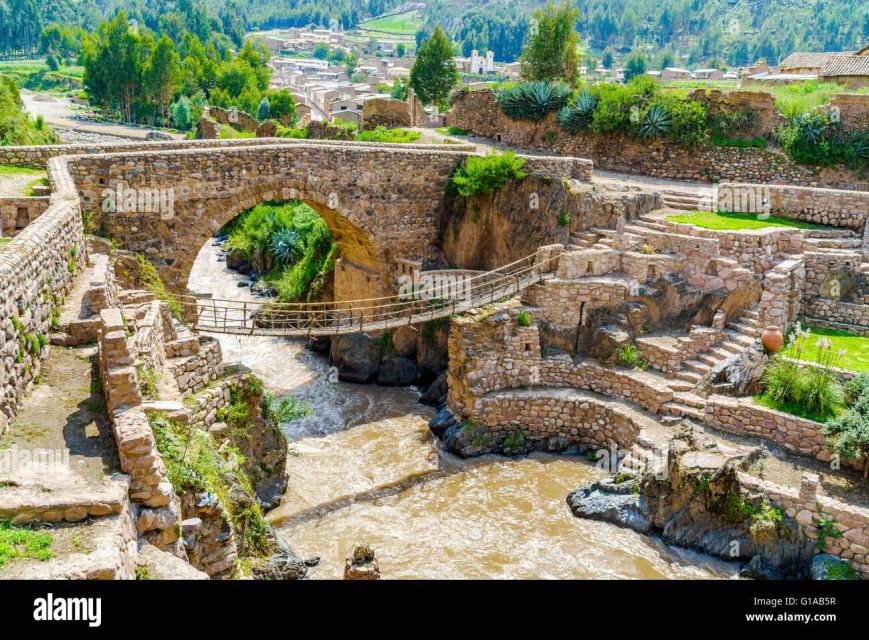
The intricate bond between the local communities in the Andean region and their ancestral heritage is vividly embodied in the collaborative efforts behind preserving and celebrating the cultural symbolism of Q’eswachaka, the last standing Inca bridge.
Community traditions are deeply ingrained in the maintenance and reconstruction of this architectural marvel, showcasing the unity and shared history of the Quechua people.
Each year, during the renewal ceremony of the bridge, individuals from four Quechua communities come together to weave a new bridge using traditional techniques passed down through generations. This collective endeavor not only ensures the bridge’s structural integrity but also serves as a powerful symbol of continuity, resilience, and the enduring legacy of the Inca civilization.
Economic Impact and Local Heritage Preser
Local communities surrounding Q’eswachaka bridge contribute significantly to the preservation of their heritage through sustainable economic practices. This has led to a positive economic impact and successful local heritage preservation.
-
Tourism Revenue: Visitors to the bridge provide income for the local communities, supporting their livelihoods and incentivizing the preservation of cultural heritage.
-
Craftsmanship: Sale of traditional crafts and textiles by locals not only generates income but also helps to keep ancient artisanal techniques alive.
-
Cultural Events: Hosting cultural events and festivals at the bridge attracts travelers, boosting the local economy while celebrating indigenous traditions.
-
Community Partnerships: Collaborating with neighboring villages and organizations fosters a sense of unity and shared responsibility in protecting the bridge and its heritage.
Here's a few more nearby tours and experiences we have reviewed.
Common questions
What Materials Are Used to Construct the Q’eswachaka Bridge and How Are They Sourced?
Traditional materials like ichu grass and straw are sourced ethically for Q’eswachaka bridge construction. Community involvement guides the decision-making process, ensuring cultural preservation and sustainability. This ancient practice showcases the importance of heritage and cooperation.
How Do the Local Communities Decide on the Annual Restoration of the Bridge and Who Is Involved in the Decision-Making Process?
Local communities decide on the annual restoration of the bridge by upholding sacred local traditions. The decision-making process involves community elders, bridge builders, and spiritual leaders. This collaborative effort ensures the preservation of cultural heritage and engineering marvel.
Are There Any Specific Rituals or Ceremonies Associated With the Construction or Restoration of the Q’eswachaka Bridge?
In the Andean region, bridge construction holds deep cultural significance. Local communities perform rituals and ceremonies to honor traditions and ensure the restoration process aligns with ancestral practices. These cultural practices bond the community.
How Has Modern Technology or Techniques Influenced the Preservation Efforts of the Q’eswachaka Bridge?
Preservation techniques for the Q’eswachaka bridge have been influenced by modern technology, enhancing sustainability. Use of durable construction materials ensures longevity. This blend of tradition and innovation secures the bridge’s cultural significance for future generations.
Are There Any Plans or Discussions for Expanding Tourism Around the Q’eswachaka Bridge and How Would That Impact the Local Community and Heritage Preservation Efforts?
Expanding tourism around Q’eswachaka bridge could bring economic growth but also impact local culture and heritage preservation efforts. Balancing visitor influx with community needs is crucial for sustainable development and maintaining the bridge’s historical significance.
Here's more of our most recent tour reviews happening neaby
- 2 Days Inca Trail to Machu Picchu With Hotel
- 2-Day Private Tour to Machu Picchu From Cusco
- 2-Day Short Inca Trail to Machu Picchu(Small Groups)
- Cusco, Sacred Valley, and Machu Picchu: Private 4-Day Tour (Mar )
- Short Inca Trail to Machu Picchu (2 Days & 1 Night)
- 4 Day Inca Trail Trek to Machu Picchu Multi Day Tour
- Wonderful Cusco 5-Day Tour With Entrance to Machupicchu
- Salkantay 5-Day Trek To Machu Picchu
- Complete Sacred Valley Tour (Full Day)
- Rainbow Mountain Full Day
- Salkantay Trek To Machu Picchu 5 Days And 4 Nights
Last Words
Set out on a journey to Q’eswachaka, the last surviving Inca bridge, where ancient Andean technology and engineering marvels await. Witness the historical significance, conservation efforts, and cultural symbolism that make this bridge a true gem of the Andes.
Experience the community’s dedication to preserving their heritage and the economic impact of sustainable tourism. Discover the secrets of Inca engineering and construction techniques that have stood the test of time.
Q’eswachaka is a bridge to the past, a testament to the enduring spirit of Andean culture.
More Great Things To Do Nearby